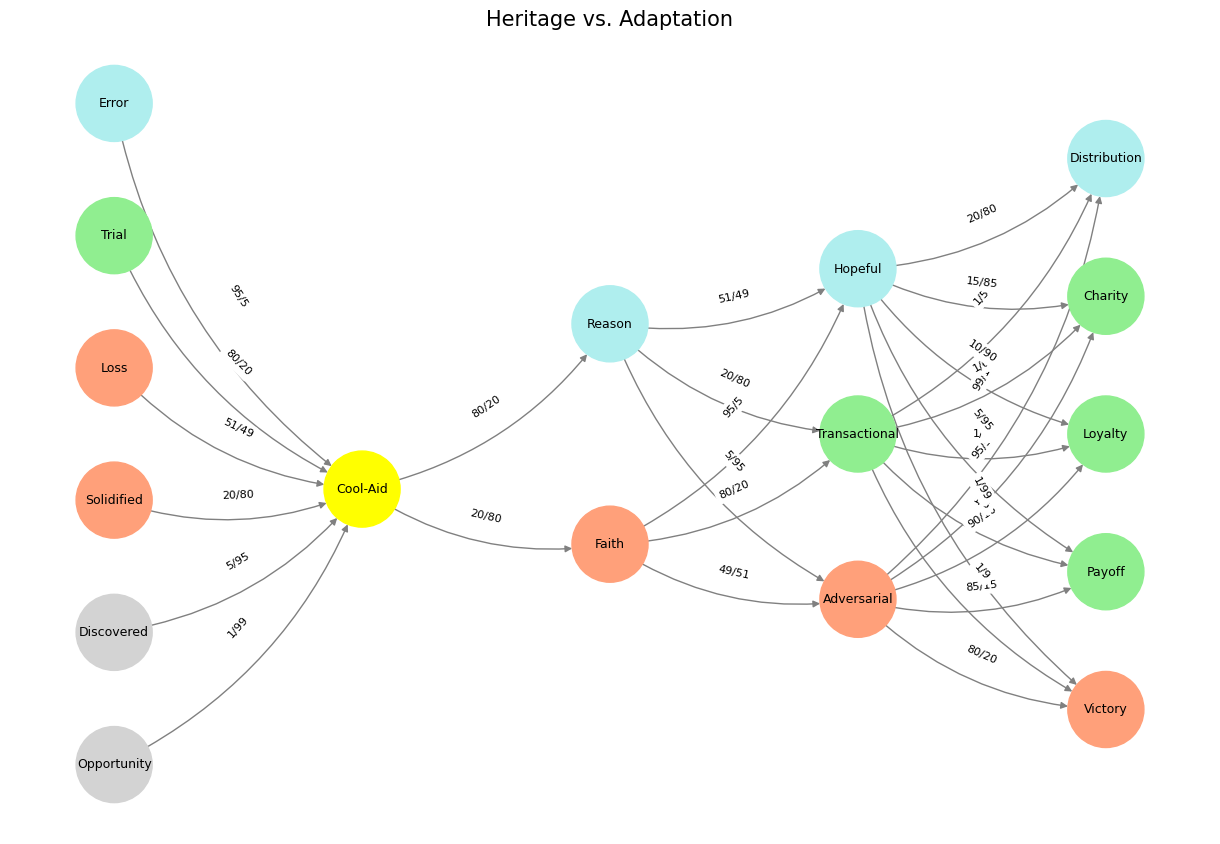Apollo & Dionysus#
The stark contrast between Jewish and Muslim Nobel Prize achievements has puzzled many, including Richard Dawkins, who marveled at the disproportionate intellectual output of a tiny population compared to the relative stagnation of a vast one. Naftali Bennett’s assertion that Jews are encouraged to challenge ideas, while many Muslims are socialized to accept authority without question, presents a provocative but incomplete framework. The issue at hand is not merely one of religious doctrine but of broader cultural and epistemic traditions—specifically, the role of iterative versus adversarial equilibria in intellectual and scientific advancement.

Fig. 15 Dionysian ethos vs. Apollonian surface. Let’s call it for what it is: Jules’ is a performative art as is Trumps. But the warrior ethos is a horse of an entirely different color.#
Historically, Jewish intellectual culture has thrived on relentless questioning, a tradition embedded in the Talmudic method, where even the most sacred texts are subject to endless debate. This ethos aligns closely with scientific inquiry, which flourishes in adversarial conditions where ideas are tested, refined, and reworked through critique. The very foundation of modern physics, economics, and mathematics owes much to thinkers who engaged in this process. Meanwhile, Islamic civilization, at its intellectual peak, once mirrored this spirit. The Islamic Golden Age was defined by an openness to Greek philosophy, advancements in algebra, and medical breakthroughs that challenged prevailing norms. However, at some point, an epistemic shift occurred. The rise of Ash‘arism over Mu‘tazilism—where theological determinism triumphed over rationalism—cemented an authority-centric approach to knowledge. Questioning became less about uncovering truth and more about adherence to established frameworks, with the long-term effect of discouraging intellectual risk-taking.
This contrast can be visualized as a neural network, where inputs, hidden layers, and outputs are dictated by how knowledge is processed within different cultural frameworks. The structure proposed in the given code—Suis, Voir, Choisis, Deviens, and M’èléve—mirrors how opportunity (input) is either solidified into loss or refined through trial and error (hidden layers), leading to different payoff structures (outputs). The Jewish intellectual tradition follows a path akin to an adversarial neural network, where feedback loops continuously refine output, improving upon past iterations. By contrast, a static knowledge structure—where certain ideas are insulated from challenge—would lead to a flattened optimization curve, reducing the probability of breakthrough discoveries.
This is not to say that one cultural framework is inherently superior, but rather that adaptation and self-correction are crucial for progress. Civilizations rise and fall not on inherent genius but on how they structure the transmission and refinement of knowledge. The European Renaissance, Japan’s post-Meiji intellectual explosion, and China’s recent technological surge all underscore that any society can pivot toward intellectual dynamism if it recalibrates its equilibrium. For the Muslim world to reclaim its once-dominant role in science, it must transition from a knowledge model that prioritizes preservation to one that actively seeks the discomfort of iteration and adversarial engagement.
The network model, when applied to civilizational knowledge structures, suggests that societies optimizing for stability at the cost of challenge will stagnate, while those that embrace iterative correction will thrive. The Muslim world’s challenge is not a lack of intellectual capacity but a system that disincentivizes epistemic competition. If Nobel Prizes are a proxy for intellectual breakthroughs, then they serve as an indicator that societies must encourage not just intelligence but environments where intelligence can battle itself into excellence.
Show code cell source
import numpy as np
import matplotlib.pyplot as plt
import networkx as nx
# Define the neural network layers
def define_layers():
return {
'Suis': ['Opportunity', 'Discovered', 'Solidified', 'Loss', "Trial", 'Error'], # Static
'Voir': ['Cool-Aid'],
'Choisis': ['Faith', 'Reason'],
'Deviens': ['Adversarial', 'Transactional', 'Hopeful'],
"M'èléve": ['Victory', 'Payoff', 'Loyalty', 'Charity', 'Distribution']
}
# Assign colors to nodes
def assign_colors():
color_map = {
'yellow': ['Cool-Aid'],
'paleturquoise': ['Error', 'Reason', 'Hopeful', 'Distribution'],
'lightgreen': ["Trial", 'Transactional', 'Payoff', 'Charity', 'Loyalty'],
'lightsalmon': ['Solidified', 'Loss', 'Faith', 'Adversarial', 'Victory'],
}
return {node: color for color, nodes in color_map.items() for node in nodes}
# Define edge weights (hardcoded for editing)
def define_edges():
return {
('Opportunity', 'Cool-Aid'): '1/99',
('Discovered', 'Cool-Aid'): '5/95',
('Solidified', 'Cool-Aid'): '20/80',
('Loss', 'Cool-Aid'): '51/49',
("Trial", 'Cool-Aid'): '80/20',
('Error', 'Cool-Aid'): '95/5',
('Cool-Aid', 'Faith'): '20/80',
('Cool-Aid', 'Reason'): '80/20',
('Faith', 'Adversarial'): '49/51',
('Faith', 'Transactional'): '80/20',
('Faith', 'Hopeful'): '95/5',
('Reason', 'Adversarial'): '5/95',
('Reason', 'Transactional'): '20/80',
('Reason', 'Hopeful'): '51/49',
('Adversarial', 'Victory'): '80/20',
('Adversarial', 'Payoff'): '85/15',
('Adversarial', 'Loyalty'): '90/10',
('Adversarial', 'Charity'): '95/5',
('Adversarial', 'Distribution'): '99/1',
('Transactional', 'Victory'): '1/9',
('Transactional', 'Payoff'): '1/8',
('Transactional', 'Loyalty'): '1/7',
('Transactional', 'Charity'): '1/6',
('Transactional', 'Distribution'): '1/5',
('Hopeful', 'Victory'): '1/99',
('Hopeful', 'Payoff'): '5/95',
('Hopeful', 'Loyalty'): '10/90',
('Hopeful', 'Charity'): '15/85',
('Hopeful', 'Distribution'): '20/80'
}
# Calculate positions for nodes
def calculate_positions(layer, x_offset):
y_positions = np.linspace(-len(layer) / 2, len(layer) / 2, len(layer))
return [(x_offset, y) for y in y_positions]
# Create and visualize the neural network graph
def visualize_nn():
layers = define_layers()
colors = assign_colors()
edges = define_edges()
G = nx.DiGraph()
pos = {}
node_colors = []
# Add nodes and assign positions
for i, (layer_name, nodes) in enumerate(layers.items()):
positions = calculate_positions(nodes, x_offset=i * 2)
for node, position in zip(nodes, positions):
G.add_node(node, layer=layer_name)
pos[node] = position
node_colors.append(colors.get(node, 'lightgray'))
# Add edges with weights
for (source, target), weight in edges.items():
if source in G.nodes and target in G.nodes:
G.add_edge(source, target, weight=weight)
# Draw the graph
plt.figure(figsize=(12, 8))
edges_labels = {(u, v): d["weight"] for u, v, d in G.edges(data=True)}
nx.draw(
G, pos, with_labels=True, node_color=node_colors, edge_color='gray',
node_size=3000, font_size=9, connectionstyle="arc3,rad=0.2"
)
nx.draw_networkx_edge_labels(G, pos, edge_labels=edges_labels, font_size=8)
plt.title("Heritage vs. Adaptation", fontsize=15)
plt.show()
# Run the visualization
visualize_nn()


Fig. 16 Change of Guards. In Grand Illusion, Renoir was dealing the final blow to the Ancién Régime. And in Rules of the Game, he was hinting at another change of guards, from agentic mankind to one in a mutualistic bind with machines (unsupervised pianos & supervised airplanes). How priscient!#

